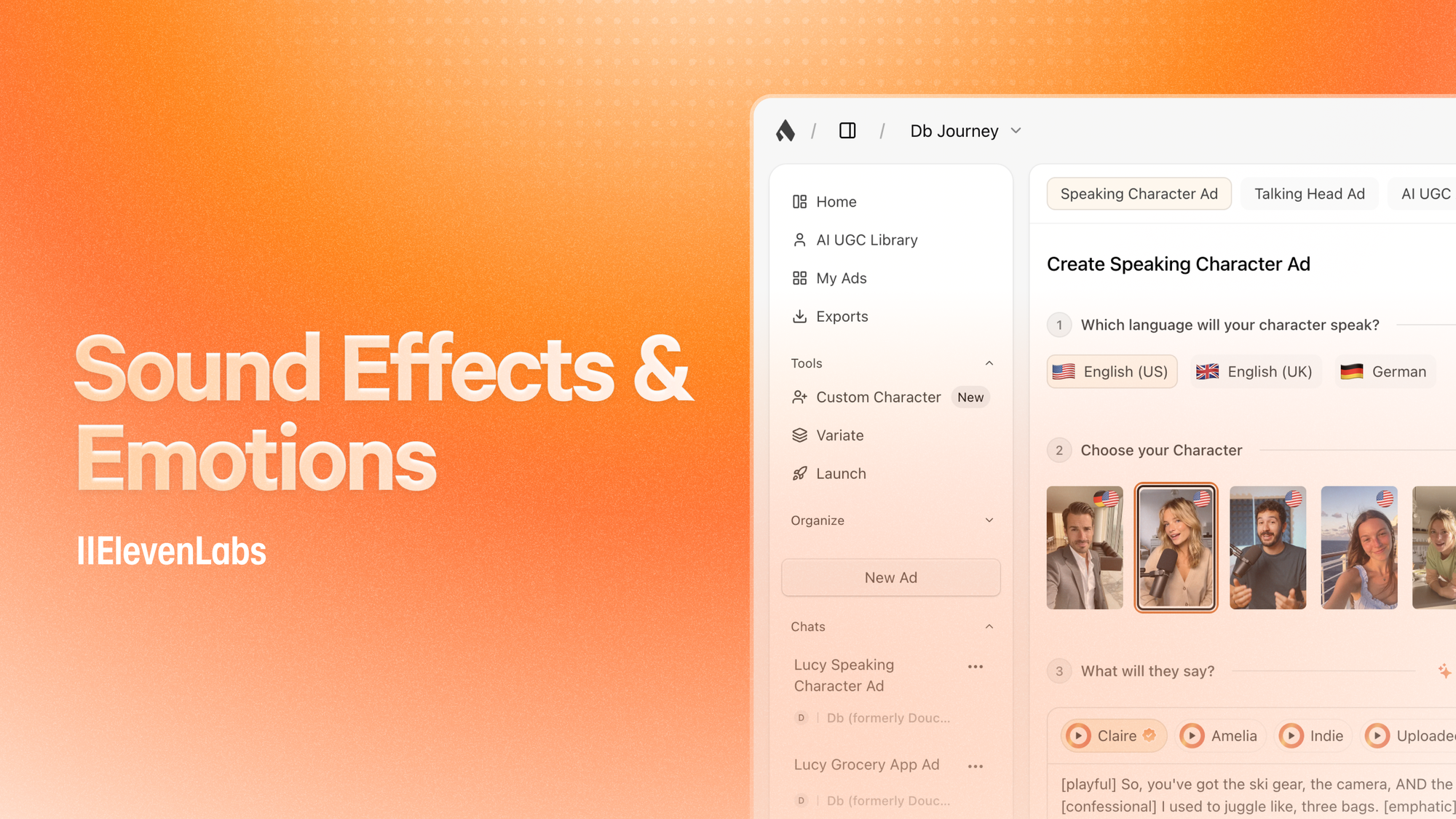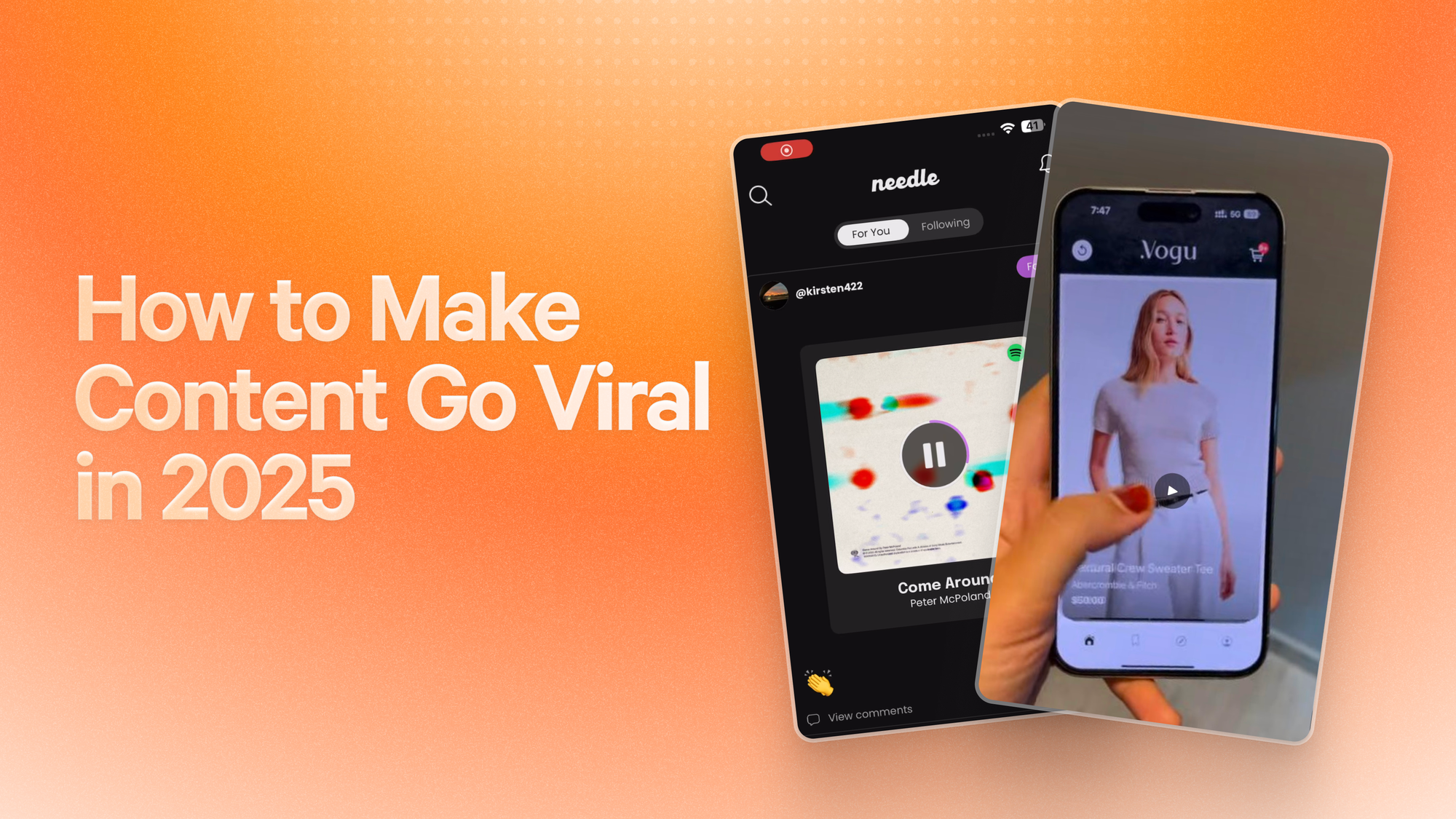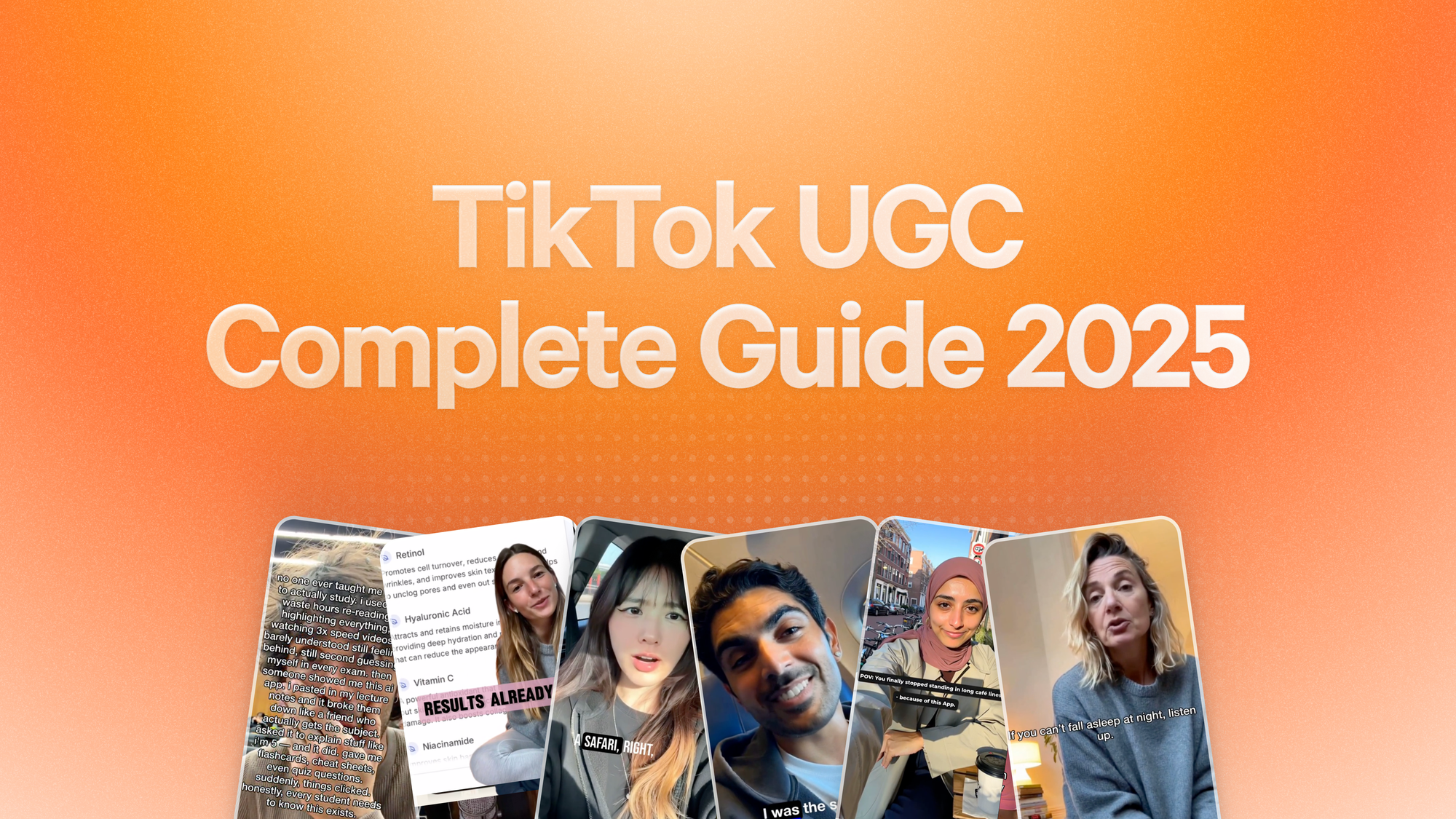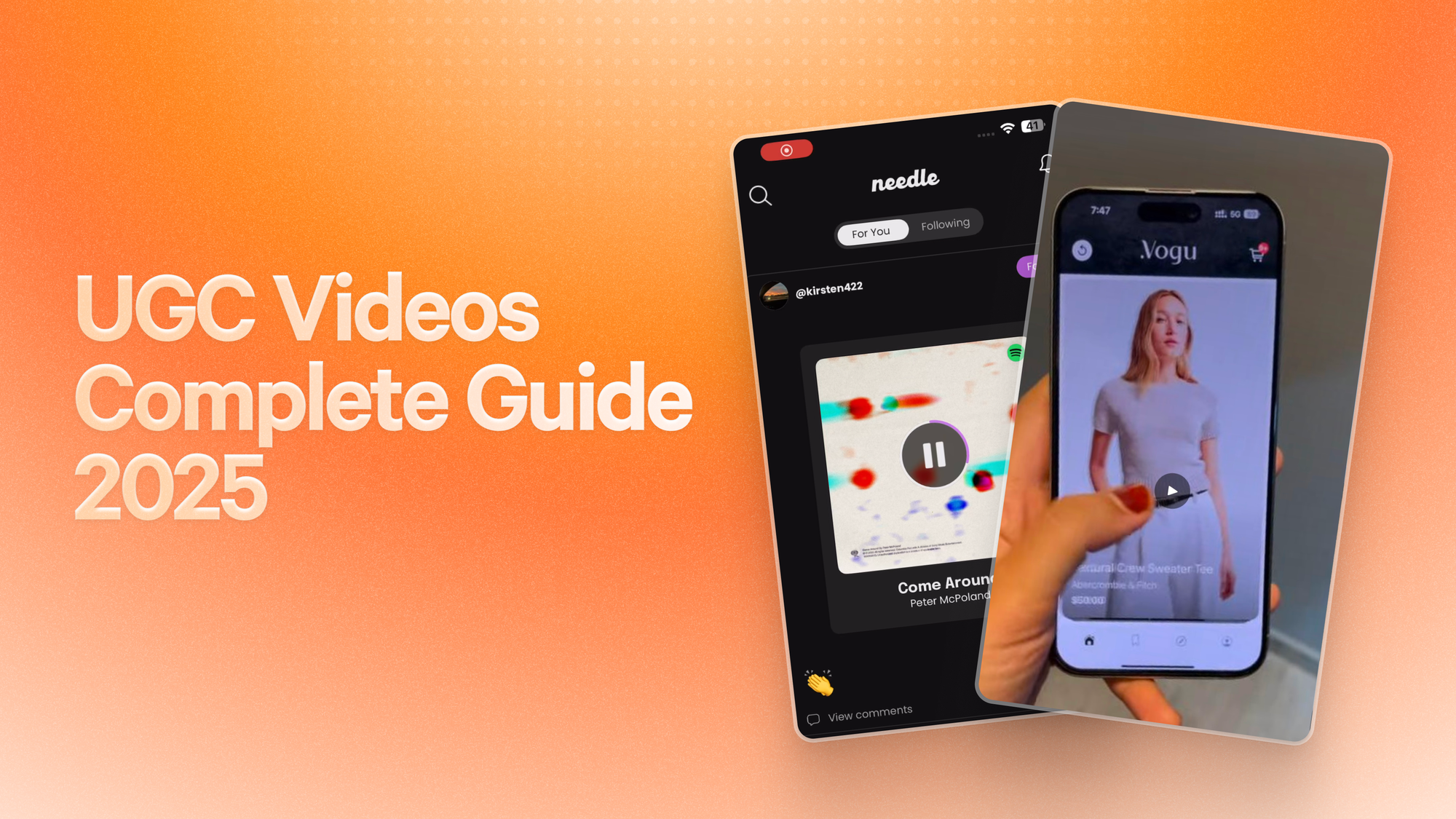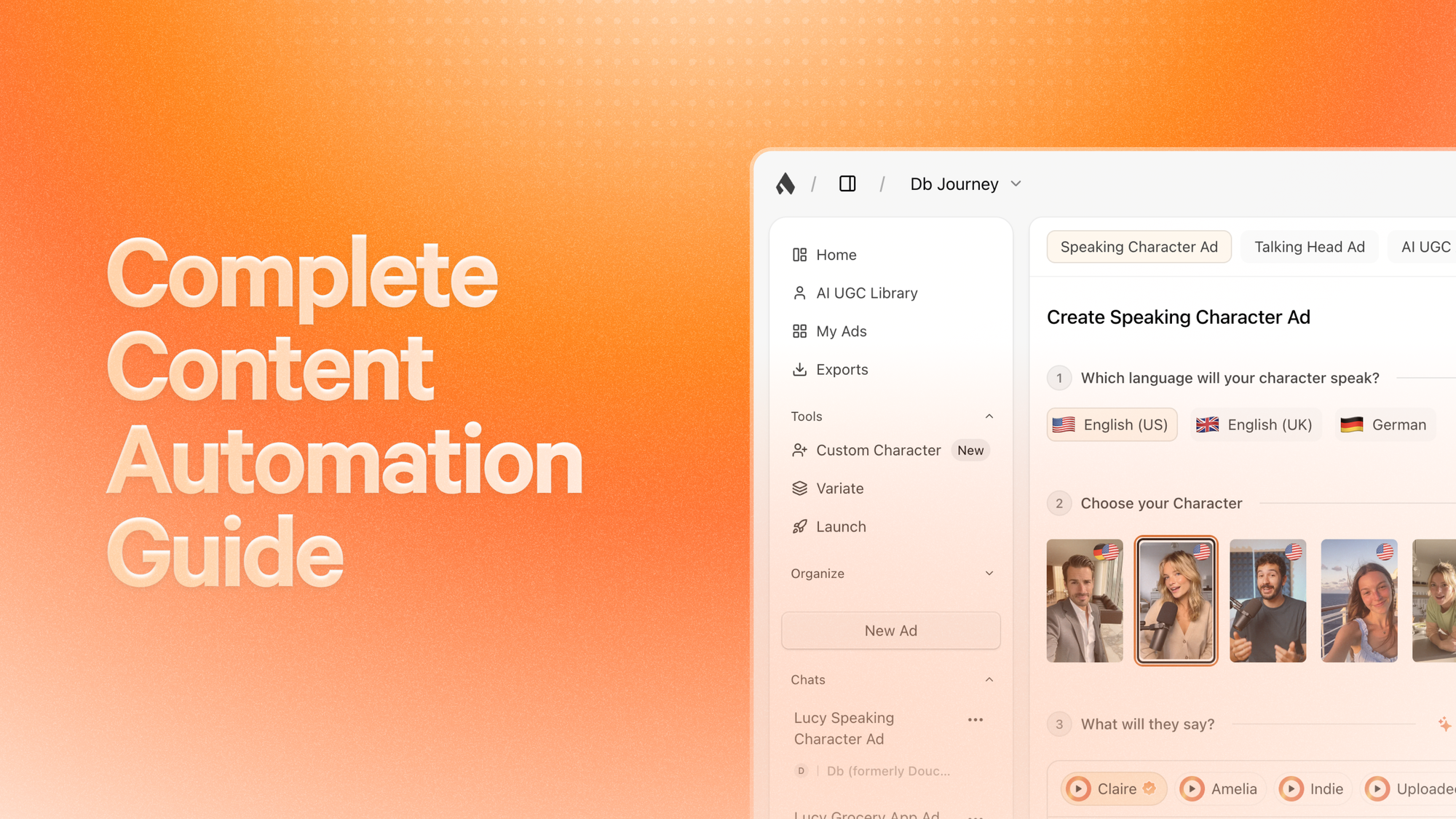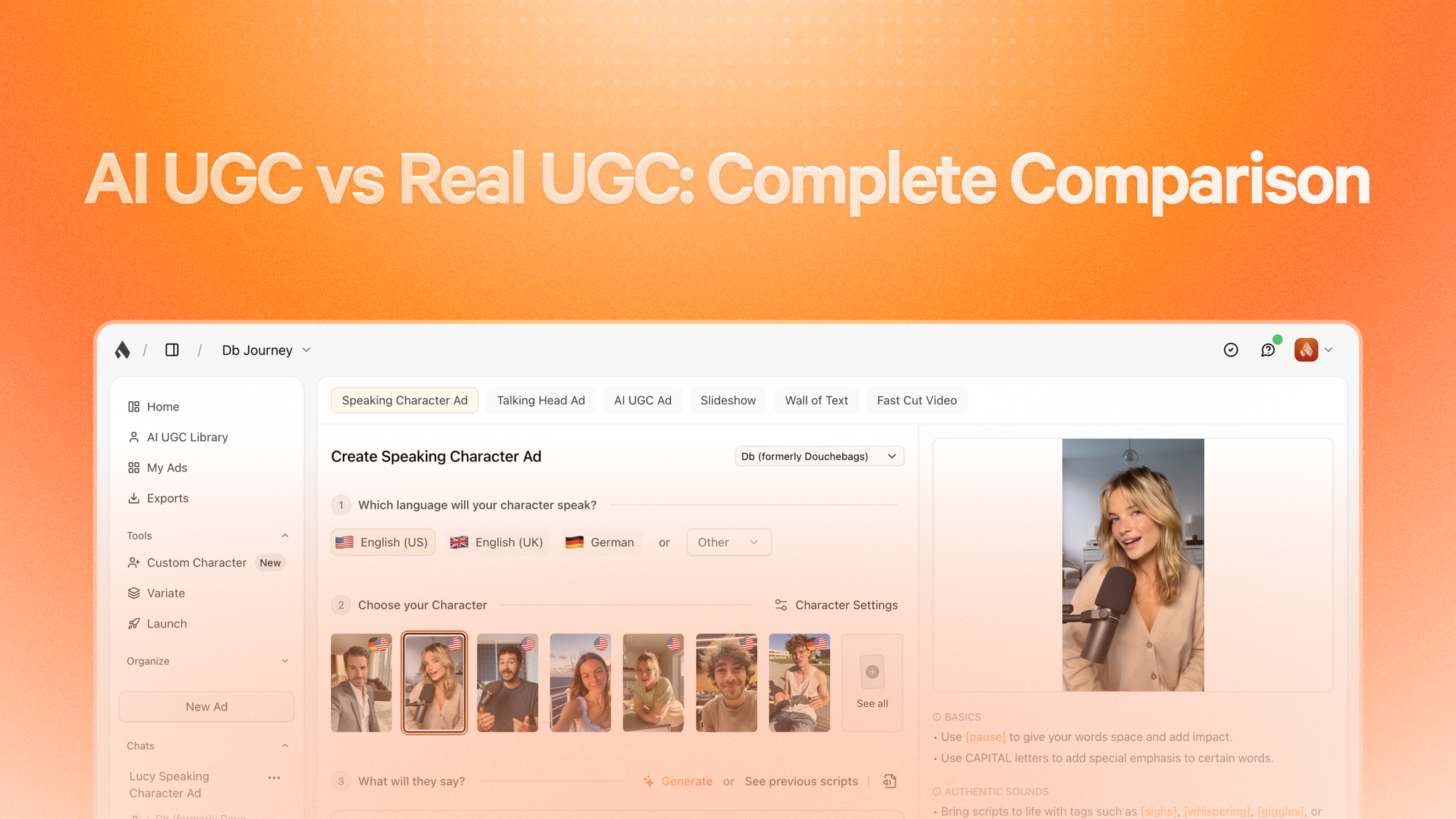Gaming App Marketing: Viral Strategies That Convert
The mobile gaming industry is projected to generate $105.7 billion in 2025, yet gaming apps spent $29 billion on user acquisition in 2023 fighting for the same players. While user acquisition costs spiral upward, a select group of games consistently achieve viral growth at a fraction of the cost.
The difference isn't luck or massive budgets. It's understanding that gaming marketing operates on fundamentally different principles than other app categories. Games sell emotions, experiences, and social connections rather than utility. This distinction completely changes what makes content go viral and drive conversions.
Smart game marketers have discovered that UGC-based ads achieve 4x higher click-through rates and reduce costs by 60%. More importantly, they increase day-7 retention by 155%. But here's what most miss: viral gaming content follows predictable patterns that can be systematically reproduced.
The Gaming Marketing Advantage Matrix
Understanding Gaming Psychology vs. App Utility
Traditional apps solve problems. Games create problems players want to solve. This psychological difference fundamentally changes marketing approach and content strategy.
Utility apps market outcomes: "Save time," "Increase productivity," "Manage finances better." Games market experiences: "Feel powerful," "Connect with friends," "Experience adventure." This experience-first approach means your marketing content must demonstrate emotional payoff, not just features.
The most successful gaming marketing strategies tap into core psychological drivers: achievement, social connection, discovery, and mastery. Your viral content should trigger these emotions within seconds of viewing.
The Viral Coefficient Formula for Games
Games have natural viral advantages that other app categories lack. Social features, competitive elements, and shareable moments create organic sharing opportunities. However, most developers fail to architect these viral mechanisms strategically.
Viral coefficient in gaming = (Invitations per user × Conversion rate of invitations × Content shareability factor) × Social feature utilization
The highest-performing games build virality into core gameplay mechanics rather than treating it as a marketing afterthought. This includes leaderboards, cooperative challenges, user-generated content systems, and social sharing rewards.
Strategic Framework: The Gaming Content Ecosystem
Multi-Format Content Strategy
Gaming marketing requires coordinated content across multiple formats because different content types serve different funnel stages. Product demos showcase gameplay mechanics, UGC content builds social proof, and viral videos create broad awareness.
Demo Content Strategy: Product demonstrations in gaming must capture the core gameplay loop within the first 10 seconds. Unlike utility apps that can explain features, games must show emotional engagement through actual gameplay footage.
The most effective game demos follow a specific narrative structure: problem/challenge presentation → player engagement → satisfying resolution → hint at deeper progression systems. This structure works because it mirrors the psychological reward loop that makes games addictive.
UGC Content Amplification: User-generated content in gaming outperforms traditional advertising because it demonstrates real player engagement and social validation. Players trust other players more than marketing messages.
However, raw UGC often lacks polish and clear messaging. The solution is hybrid UGC content that maintains authenticity while ensuring professional production values and clear value propositions.
Viral Video Architecture: Viral gaming content follows predictable patterns: unexpected moments, social connection opportunities, achievement showcases, or humor that resonates with gaming culture.
The most shareable gaming videos create "I have to try this" moments rather than "this looks cool" reactions. This requires showing unique, surprising, or socially impressive gameplay situations rather than generic feature tours.
Platform-Specific Optimization Strategies
Different platforms require adapted approaches while maintaining consistent core messaging. TikTok rewards quick emotional hooks and trendy formats. YouTube favors longer-form content that demonstrates depth. Instagram prioritizes visual polish and lifestyle integration.
TikTok Gaming Strategy: Short-form content must capture attention within 2-3 seconds and deliver emotional payoff within 15 seconds. The most successful gaming TikToks show impressive plays, funny moments, or surprising game outcomes rather than explaining features.
Focus on formats that encourage participation: challenges, trends, reactions to gameplay moments, or tutorials for advanced techniques. The goal is creating content that other users want to recreate or respond to.
YouTube Gaming Optimization: Longer-form content allows deeper gameplay demonstration and strategy explanation. However, maintain high engagement throughout by structuring content around tension and resolution cycles.
Successful gaming YouTube content combines entertainment with education: "How I reached level 100 in 24 hours" or "The strategy that made me unbeatable." These formats demonstrate mastery while providing actionable value.
Instagram Gaming Positioning: Visual storytelling platforms require polished gameplay moments and lifestyle integration. Show games as part of social experiences rather than isolated entertainment.
Stories and Reels work well for quick gameplay highlights, while feed posts can showcase longer narrative arcs or achievement celebrations. The key is positioning gaming as socially impressive rather than time-wasting.
Advanced User Acquisition Tactics
Cost-Efficient Scaling Strategies
With gaming apps spending $29 billion on user acquisition in 2023 and average gaming CPI ranging from $1.50-$6.00 depending on genre, cost efficiency determines profitability. The most successful approaches combine broad reach with precise targeting based on behavioral patterns rather than demographic assumptions.
Behavioral Targeting Over Demographics: Gaming preferences don't correlate strongly with traditional demographic categories. A 45-year-old executive might prefer the same puzzle games as a 16-year-old student. Focus targeting on gaming behavior patterns: session length, in-app purchase history, genre preferences, and social interaction levels.
Creative Performance Optimization: Since Apple's App Tracking Transparency and Google's Privacy Sandbox limit precise targeting, creative performance becomes the primary differentiation factor. This means systematic testing of multiple creative variations rather than relying on single high-production campaigns.
The most effective approach is rapid creative iteration: produce 20+ variations of core concepts, test performance across platforms, then scale winning patterns while continuing to test new approaches.
Modern AI platforms enable game developers to test dozens of creative variations within their first week - discover how Superscale transforms gameplay footage into professional UGC ads that perform at scale.
Cross-Platform Attribution: Gaming users often discover games on one platform but download on another. Your attribution systems must track cross-platform journeys to accurately measure campaign effectiveness and optimize spending.
Retention-Focused Acquisition
Gaming success depends more on player lifetime value than initial install volume. This means acquisition campaigns should optimize for retention metrics rather than just install volume or cost-per-install.
Day-7 Retention Optimization: Focus acquisition content on attracting users likely to remain engaged beyond the initial session. With median day-7 retention at just 3.4-3.9% across all mobile games, showing deeper gameplay mechanics and progression systems rather than just flashy graphics becomes critical for long-term success.
Cohort-Based Campaign Optimization: Different user segments have different retention patterns and lifetime values. Segment acquisition campaigns based on expected user value rather than treating all installs equally.
High-value user segments justify higher acquisition costs if their lifetime value supports profitable unit economics. Low-retention segments should use cost-efficient acquisition approaches even if initial engagement appears lower.
Content Creation and Viral Mechanics
AI-Powered Content Production
The gaming marketing landscape is rapidly shifting toward AI-generated content production. With UGC increasing conversions by 161% and 56% of consumers more likely to click on UGC-based ads, AI tools enable rapid creation of authentic-looking content at scale.
Hybrid UGC Production: The most effective approach combines authentic user-generated content with AI enhancement tools that improve production quality while maintaining authenticity. This allows rapid content creation at scale while preserving the social proof that makes UGC effective.
Tools that can generate professional-quality videos from gameplay footage, add compelling voiceovers, and optimize for platform-specific requirements enable testing velocity impossible with traditional production methods.
Demo Video Automation: Product demonstration videos can be systematically produced using AI tools that understand gaming content requirements. This includes automatic editing of gameplay footage, strategic pacing for attention retention, and platform-specific optimization.
The key advantage is speed-to-market: you can test multiple demo video approaches simultaneously rather than investing weeks in single high-production pieces that may not resonate with target audiences.
Viral Content Systematic Production: Rather than hoping for organic viral moments, successful game marketers systematically produce content designed for viral potential. This includes identifying trending formats, adapting them for gaming contexts, and producing variations rapidly enough to capitalize on trending opportunities.
The advantage lies in speed and scale - while competitors debate which creative approach to pursue, successful gaming apps test multiple angles simultaneously and double down on what works. Superscale users create 20+ video variations from a single gameplay session, enabling systematic viral content production that would be impossible with traditional methods.
Performance Measurement and Optimization
Attribution Beyond Installs: Gaming marketing success requires tracking engagement quality, not just quantity. Monitor metrics like session length, progression rate, social interaction frequency, and in-app purchase behavior to understand true campaign effectiveness.
Creative Performance Analytics: Systematic analysis of creative performance reveals patterns that can be reproduced across campaigns. Track which visual elements, messaging approaches, and content formats drive highest engagement and retention rates.
Viral Amplification Measurement: When content achieves viral spread, analyze contributing factors to understand replicable elements. This includes timing, platform selection, hashtag usage, influencer engagement, and content format optimization.
Gaming Community and Social Proof
Community-Driven Marketing
Gaming communities generate more authentic marketing content than traditional advertising approaches. However, community marketing requires genuine engagement and value creation rather than promotional messaging.
Influencer Partnership Strategy: Gaming influencers have highly engaged audiences that trust their game recommendations. However, successful partnerships require authentic integration rather than obvious sponsorship content.
The most effective approach is providing influencers with early access, exclusive content, or genuine gameplay experiences that create natural conversation opportunities. Forced promotional content typically generates lower engagement and audience skepticism.
User-Generated Campaign Amplification: Encourage players to create and share content around specific themes, challenges, or achievements. However, provide clear guidelines and incentives that align with your marketing objectives while allowing creative freedom.
Successful UGC campaigns in gaming often revolve around impressive achievements, creative gameplay approaches, or social challenges that naturally showcase game features while entertaining broader audiences.
Social Feature Marketing
Games with strong social features have natural marketing advantages through player-to-player sharing and competitive dynamics. However, these features must be designed for sharing rather than just engagement.
Competitive Achievement Sharing: Leaderboards, tournaments, and achievement systems create natural sharing opportunities when designed with social media integration. Players want to showcase impressive accomplishments to broader social networks.
Cooperative Content Creation: Multiplayer experiences and collaborative gameplay create shared memories that players naturally want to document and share. Design these experiences with content creation in mind.
Technology Integration for Scale
Video Content Production Systems
Gaming marketing success increasingly depends on video content quality and production velocity. Traditional video production methods cannot match the testing speed required for optimization across multiple platforms and audience segments.
Automated Gameplay Capture: Systems that automatically capture compelling gameplay moments reduce content creation bottlenecks while ensuring consistent quality standards. This includes AI recognition of highlight-worthy moments and automatic editing for platform-specific requirements.
Multi-Platform Optimization: Content must be optimized for different platform requirements while maintaining consistent messaging. This includes aspect ratio adaptation, length optimization, and platform-specific feature utilization.
A/B Testing at Scale: Successful gaming marketing requires testing multiple creative variations simultaneously. Production systems must enable rapid iteration and testing rather than focusing on individual high-production pieces.
Advanced AI video creation tools enable game marketers to produce professional-quality UGC videos, product demos, and viral content in minutes rather than weeks. This production speed advantage allows systematic testing of messaging approaches, visual styles, and platform optimizations that would be impossible with traditional production methods.
The strategic advantage extends beyond individual videos. When you can create video content quickly and cost-effectively, you can maintain consistent publishing schedules, test personalization approaches for different player segments, and respond rapidly to trending opportunities or competitive changes.
This capability becomes particularly powerful for gaming because visual content performs significantly better than text-based alternatives in gaming marketing. Players want to see gameplay, understand mechanics through demonstration, and visualize the social experiences games provide.
Implementation Roadmap for Gaming Success
Phase 1: Foundation Building (Weeks 1-4)
Audience Research and Segmentation: Identify your highest-value player segments based on retention, engagement, and monetization patterns. This research informs all subsequent marketing decisions and content strategy.
Document player behavior patterns across different lifecycle stages: awareness, trial, engagement, retention, and advocacy. Each stage requires different content approaches and optimization metrics.
Competitive Analysis: Study successful games in your genre to understand proven marketing approaches and identify differentiation opportunities. Focus on content performance rather than just creative execution.
Content Production System Setup: Establish workflows for rapid content creation, testing, and optimization. This includes tool selection, team training, and performance measurement systems.
Phase 2: Content Strategy Development (Weeks 5-8)
Format Testing and Optimization: Test different content formats to identify highest-performing approaches for your specific audience and game mechanics. This includes demo videos, UGC content, viral video formats, and platform-specific optimizations.
Creative Framework Development: Develop repeatable creative frameworks based on testing results. This allows consistent content production while maintaining quality and effectiveness.
Distribution Channel Optimization: Identify highest-ROI distribution channels and optimize content for platform-specific requirements and audience behaviors.
Phase 3: Scaling and Automation (Weeks 9-12)
Production Workflow Optimization: Implement systems for scaling content production while maintaining quality. This includes AI tool integration, quality control processes, and performance tracking.
Campaign Automation: Develop automated campaign management systems that optimize spending based on performance data and user behavior patterns.
Performance Analytics Integration: Implement comprehensive measurement systems that track user journey from content interaction through long-term retention and monetization.
Ongoing: Optimization and Evolution
Continuous Testing and Refinement: Gaming marketing requires constant optimization based on changing player preferences, platform algorithms, and competitive dynamics.
Trend Integration: Stay current with gaming culture trends and integrate relevant elements into marketing content while maintaining brand consistency.
Technology Advancement: Continuously evaluate new tools and technologies that can improve content production efficiency or campaign performance.
The gaming marketing landscape rewards systematic approaches over one-off campaigns. Success comes from building content production systems that can adapt quickly to changing conditions while maintaining focus on metrics that drive long-term player value.
Games that achieve viral success and sustainable growth typically combine authentic community engagement with professional content production capabilities. The tools and strategies exist to systematically achieve these results—the difference lies in strategic implementation and consistent execution.
Your competitive advantage comes from building systems that others cannot easily replicate: deep audience understanding, rapid content production capabilities, and optimization processes that continuously improve performance based on real player behavior data.
The most successful gaming apps have already shifted from hoping for viral moments to systematically creating them. Start building your content production system with Superscale - upload your gameplay footage and see how AI transforms it into viral-ready UGC ads that convert players at scale.





